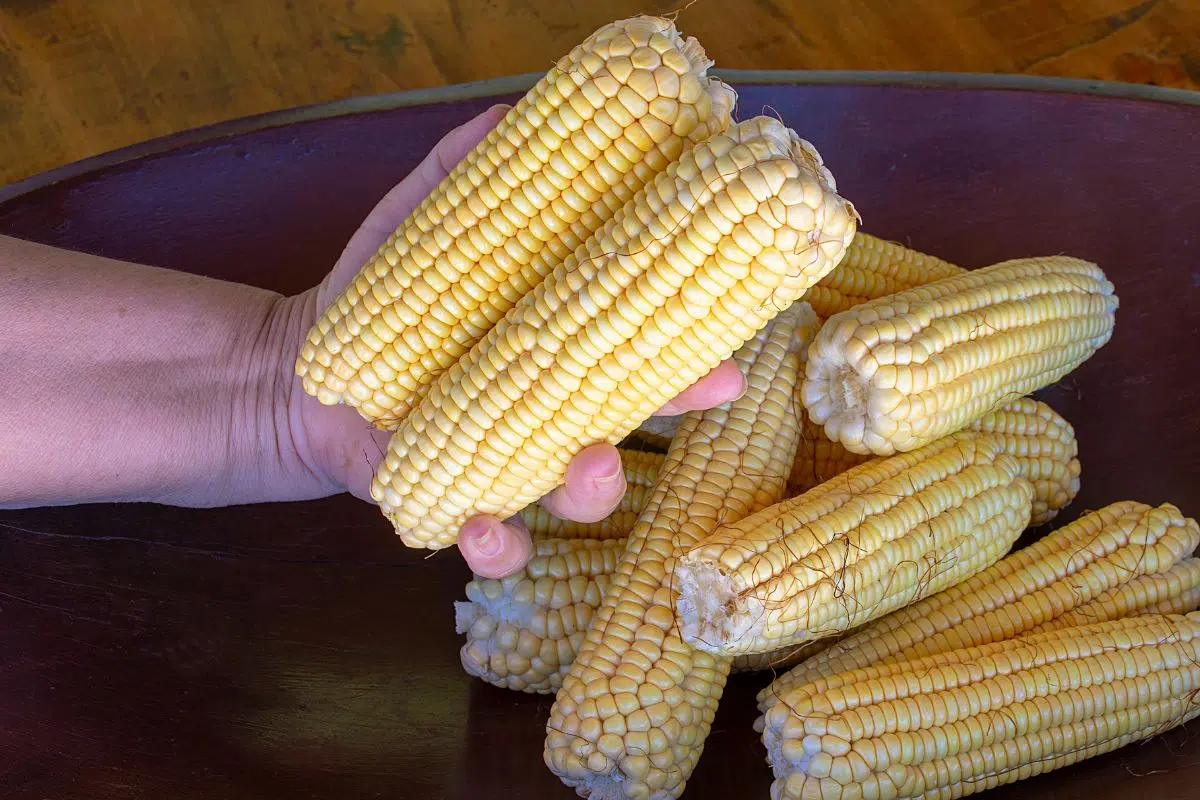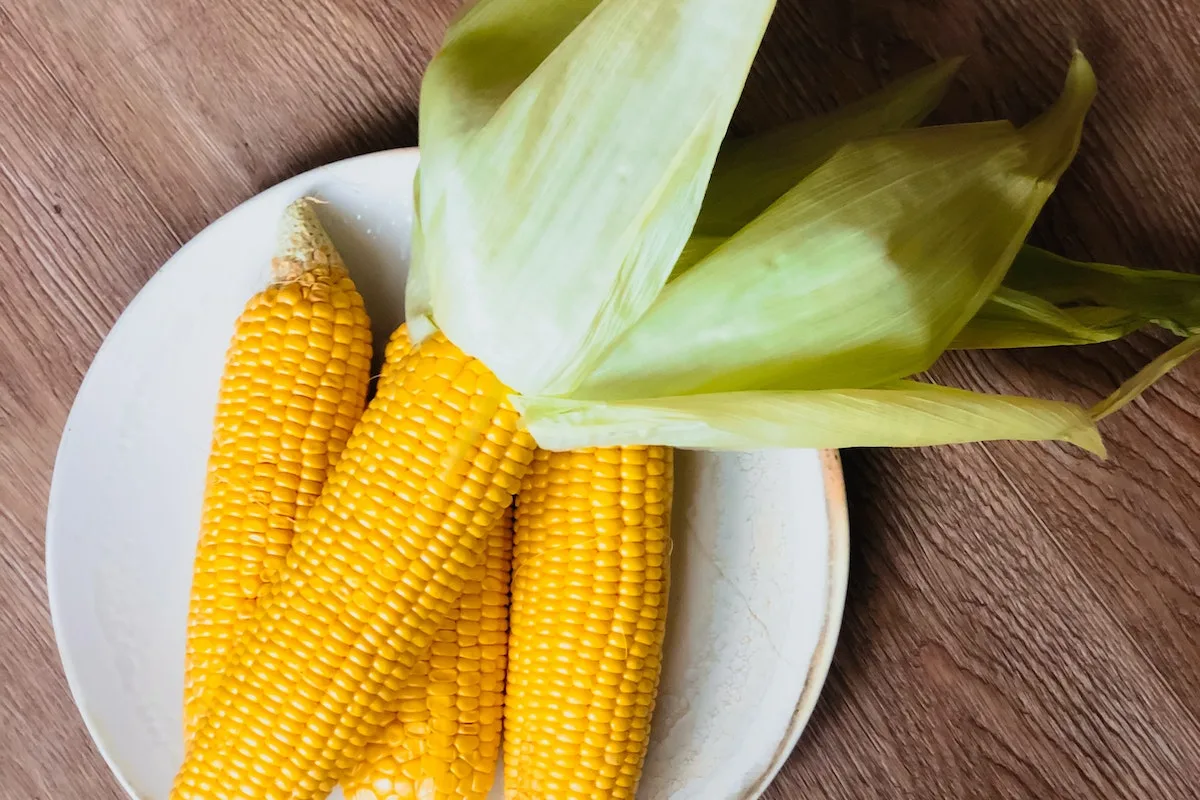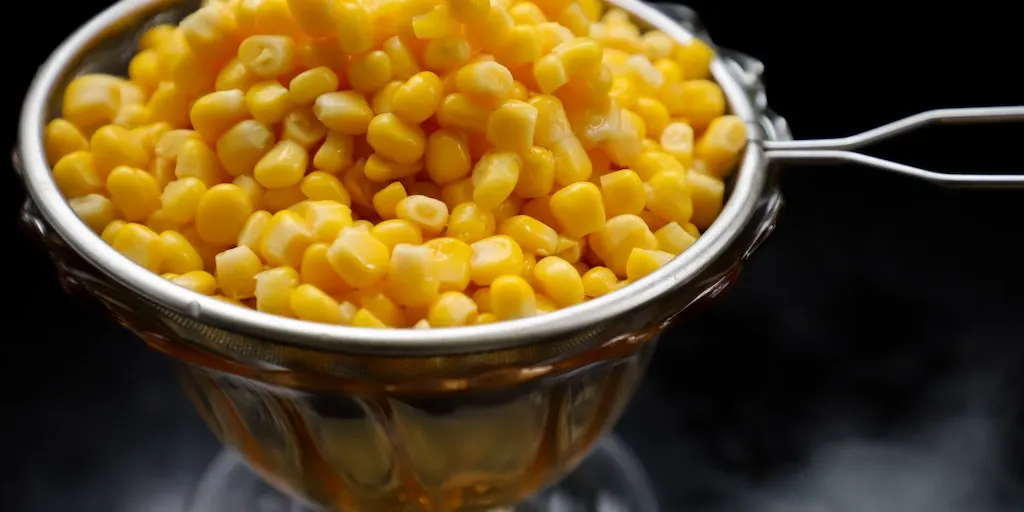Corn on the cob can be a delicious addition to your favorite meal, and it’s often cheaper to buy fresh corn on the cob in bulk.
However, the problem with doing this is that it can be difficult to keep your corn on the cob fresh until you get around to eating it.

If you want to make sure your corn on the cob stays as fresh as possible, you’ll need to store it correctly in the refrigerator or freezer.
Read on to learn our storage tips to keep corn on the cob fresh for anywhere from a few days to several weeks.
Storing Cooked Vs Uncooked Corn
If you’re dealing with uncooked corn that still has the husk on it, it’s important not to remove the husk. That’s because once you remove the husk and expose the corn kernels to the air, the corn will begin to dry out.
However, if you have already cooked your corn and want to save it to eat for later, the husks will have already been removed.
This means that you will need to take additional precautions to ensure that the kernels don’t dry out.
Aluminum foil tends to work best for this, and we also recommend using an airtight container to make sure that no air is able to get through the foil barrier.
Bear in mind that even when storing corn on the cob uncooked with the husks on, you should still take the precaution of at least an airtight bag before storing the corn.
This will provide extra protection in addition to the air barrier provided by the husk.
Keeping Corn On The Cob In The Refrigerator
If you know you’re going to eat your corn on the cob within 3 to 5 days, it’s fine to store it in the refrigerator.
As long as you take appropriate storage measures, the corn should stay fresh in your refrigerator for at least 3 days.
Even when storing corn on the cob in the refrigerator rather than the freezer, it’s best to keep the corn in a sealed plastic bag.
Make sure not to wash the corn before sealing it in the bag.
This may seem like the logical thing to do to keep the corn free from bacteria, but if the corn gets waterlogged, it could start to rot faster.

Storing Corn On Te Cob In The Freezer
If you want to keep your corn on the cob fresh for more than a few days, you’ll need to store it in the refrigerator.
However, before you do this, there are a few steps you’ll need to follow to make sure that the corn retains its color and flavor after freezing.
First, you shouldn’t freeze uncooked corn on the cob.
Instead, you should blanch it after shucking it because this helps the corn to stay bright yellow and flavorful.
It also means you won’t need to cook the corn after defrosting, so it will save you time when you want to prepare the corn for eating.
You can store whole corn on the cob in a freezer bag with a zip-top bag over the top for extra airflow prevention.
Make sure to squeeze all the air out of both bags before sealing, otherwise, you’ll just be trapping air in the bag with your corn and it will dry out.
Alternatively, you can cut the corn kernels off the cob before putting them into a freezer bag.
Frequently Asked Questions
How Do You Choose The Freshest Corn?
If you want your corn to stay fresh for as long as possible in the fridge or freezer, it’s best to choose the freshest possible corn at the time of purchase.
Signs of freshness in corn include a bright green husk that is wrapped tightly around the corn itself, as opposed to a dull husk that wraps loosely around the corn.
However, the tassels that stick up from the top of the corn should be brown when corn is fresh, and they should also feel sticky. If they are black or feel dry, the corn is already past its best.
It can be tempting to look inside the husk at the corn itself to determine freshness, but this can damage the husk, so you shouldn’t do this before purchasing corn.

How Can I Tell If Corn On The Cob Is Bad?
Even when you store corn on the cob properly in an attempt to keep it fresh, the corn may go bad before you get a chance to eat it.
It’s important to know the signs of corn on the cob going bad to stop you from eating rotten produce.
Assuming that your corn on the cob has the husk still on, you can use the color of the husk and the color and texture of the tassels to get an idea of whether it’s good to eat.
However, if you don’t have the husk to guide you, you should use your sense of smell and touch to examine the corn.
For example, if it smells bad or feels slimy, you can be fairly sure that it’s not safe to eat the corn.
A mushy texture is another indication of corn on the cob that has gone bad.
Of course, if you see visible mold, you should not eat the corn.
What Happens If You Eat Bad Corn On The Cob?
Eating bad corn on the cob can cause food poisoning, which may result in symptoms like abdominal pain, vomiting, and diarrhea.
This is why it’s important to keep corn on the cob fresh if you’re not going to eat it straight away.
Final Thoughts
You can keep corn on the cob fresh by storing it in the refrigerator or freezer.
Use aluminum foil and an airtight bag to keep air away from the corn if the husks have been removed. You can blanch corn on the cob before freezing if you have removed the husks.
If the husks are still on, a simple freezer bag should suffice.

Ingredients
- 3 ears of corn shucked
- 4 cups water
- 1/4 cup tapioca pearls
- 2 coconut milk
- 1/2 cup sugar
- salt
- 2 tablespoons sesame seeds
Instructions
- To prepare the corn, place each ear upright in a bowl and firmly hold it in place. Use a sharp chef’s knife to shave off the kernels along the length of the ear. Set the kernels aside.
- In a pot, combine the corn cobs, pandan leaves (if using), and water. Bring to a boil, then cover, reduce heat, and let simmer for 30 minutes.
- While the corn mixture is simmering, place tapioca pearls in a small bowl and cover with cold water, allowing them to soak.
- Remove the corn cobs and pandan leaves from the pot and discard. Add coconut milk, corn kernels, sugar, and a pinch of salt to the pot, stirring to combine. Return to a boil and simmer until the corn is tender, which should take around 10 minutes. Taste and adjust sugar and salt as desired.
- Stir in the soaked tapioca pearls and let simmer for an additional 2 minutes. Remove from heat and allow to cool. The dish can be refrigerated for up to 2 days, and if it becomes too thick, add water to thin it out.
- Serve the sweet corn pudding warm or cold in bowls or glasses, and sprinkle with toasted sesame seeds just before serving.
